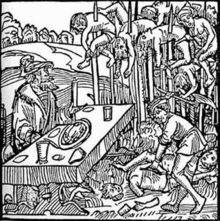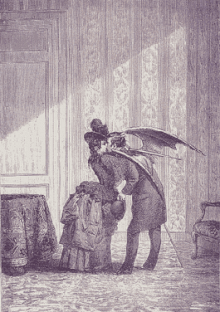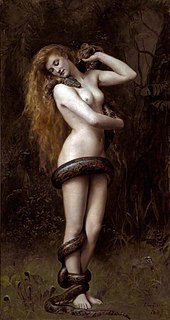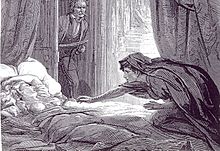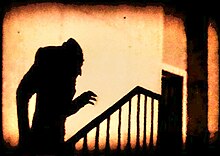Vlad the Impaler
| Vlad III Dracula | |
|---|---|
| Voivode of Wallachia | |
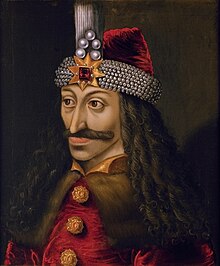 The Ambras Castle portrait of Vlad III, c. 1560, reputedly a copy of an original made during his lifetime[1] |
|
| Reign | 1448; 1456–1462; 1476 |
| Born | November or December 1431[2] |
| Birthplace | Sighișoara, Transylvania, Kingdom of Hungary |
| Died | December 1476 or January 1477[2] (aged 45) |
| Place of death | Bucharest, Wallachia |
| Royal House | House of Drăculești (branch of the House of Basarab) |
| Father | Vlad II Dracul |
| Mother | Cneajna of Moldavia |
Vlad III spent much of his rule campaigning against the Ottoman Empire and its expansion.[4] As the cognomen 'The Impaler' suggests, his practice of impaling his enemies[5] is central to his historical reputation. During his lifetime, his reputation for excessive cruelty spread abroad, to Germany and elsewhere in Europe. The total number of his victims is estimated in the tens of thousands. The name of the vampire Count Dracula in Bram Stoker's 1897 novel Dracula was inspired by Vlad's patronymic.[5
Name
Further information: House of Drăculeşti
During his life Vlad wrote his name in Latin documents as Wladislaus Dragwlya, vaivoda partium Transalpinarum (1475).[6]His Romanian patronymic Dragwlya (or Dragkwlya)[6] Dragulea, Dragolea, Drăculea[7] is a diminutive of the epithet Dracul carried by his father Vlad II, who in 1431 was inducted as a member of the Order of the Dragon, a chivalric order founded by Sigismund of Hungary in 1408. Dracul is the Romanian definite form, the -ul being the suffixal definite article (deriving from Latin ille). The noun drac "dragon" itself continues Latin draco. In Modern Romanian, the word drac has adopted the meaning of "devil" (the term for "dragon" now being balaur or dragon). This has led to misinterpretations of Vlad's epithet as characterizing him as "devilish".[citation needed]
Vlad's moniker of Țepeș ("Impaler") identifies his favourite method of execution. It was attached to his name posthumously, in ca. 1550.
House of Drăculeșt
Members of the Drăculeşti line
Members of the Drăculeşti line who held the throne of Wallachia include the following:| Ruler | Remark | |||||
|---|---|---|---|---|---|---|
| Vlad II Dracul | 1436-1442, 1443-1447; son of Mircea cel Bătrân | |||||
| Mircea II | 1442; son of Vlad II | |||||
| Vlad III Drăculea | 1448, 1456-1462, 1476; son of Vlad II | |||||
| Radu cel Frumos | 1462-1473, 1474; son of Vlad II | |||||
| Vlad Călugărul | 1481, 1482-1495; son of Vlad II | |||||
| Radu cel Mare | 1495-1508; son of Vlad Călugărul | |||||
| Mihnea cel Rău | 1508-1509; son of Vlad III | |||||
| Mircea III Dracul | 1510; son of Mihnea cel Rău | |||||
| Vlad cel Tânăr | 1510-1512; son of Vlad Călugărul | |||||
| Radu de la Afumaţi | 1522-1523, 1524, 1524-1525, 1525-1529; son of Radu cel Mare | |||||
| Radu Bădica | 1523-1524; son of Radu cel Mare | |||||
| Vlad Înecatul | 1530-1532; son of Vlad cel Tânăr | |||||
| Vlad Vintilă de la Slatina | 1532-1534, 1534-1535; son of Radu cel Mare | |||||
| Radu Paisie | 1534, 1535-1545; son of Radu cel Mare | |||||
| Mircea Ciobanul | 1545-1552, 1553–1554, 1558-1559; son of Radu cel Mare | |||||
| Pătraşcu cel Bun | 1554-1558; son of Radu Paisie | |||||
| Petru cel Tânăr | 1559-1568; son of Mircea Ciobanul | |||||
| Alexandru II Mircea | 1568-1574, 1574-1577; son of Mircea III Dracul | |||||
| Vintilă | 1574; son of Pătraşcu cel Bun | |||||
| Mihnea Turcitul | 1577-1583, 1585-1591; son of Alexandru II Mircea | |||||
| Petru Cercel | 1583-1585; son of Pătraşcu cel Bun | |||||
| Mihai Viteazul | 1593-1600; possibly a son of Pătraşcu cel Bun | FamilyEarly lifeVlad was born in Sighișoara, Transylvania, in the Kingdom of Hungary (today part of Romania), in the winter of 1431 to Vlad II Dracul, future voivode of Wallachia. Vlad's father was the son of the celebrated Voivode Mircea the Elder. His mother is believed to be the second wife of Vlad Dracul, Princess Cneajna of Moldavia, eldest daughter of Alexandru cel Bun and aunt to Stephen the Great of Moldavia.[8] He had two older half-brothers, Mircea II and Vlad Călugărul, and a younger brother, Radu III the Handsome.In the year of his birth, Vlad's father, known under the nickname Dracul, had traveled to Nuremberg where he had been vested into the Order of the Dragon. At the age of five, young Vlad was also initiated into the Order.[2] Vlad and Radu spent their early formative years in Sighișoara under the care and tutelage of their mother and the wives of other exiled boyars. During the first reign of their father, Vlad II Dracul, the Voivode brought his young sons to Târgoviște, the capital of Wallachia at that time. The Byzantine chancellor Mikhail Doukas showed that, at Târgoviște, the sons of boyars and ruling princes were well-educated by Romanian or Greek scholars commissioned from Constantinople. Vlad is believed to have learned combat skills, geography, mathematics, science, languages (Old Church Slavonic, German, Latin), and the classical arts and philosophy.[9] Life in EdirneIn 1436, Vlad II Dracul ascended the throne of Wallachia. He was ousted in 1442 by rival factions in league with Hungary, but secured Ottoman support for his return by agreeing to pay the Jizya (tax on non-Muslims) to the Sultan.Vlad II also sent his two legitimate sons, Vlad and Radu, to the Ottoman court, to serve as hostages of his loyalty. Radu converted to Islam, entered the service of Sultan Murad II's son, Mehmed II (later known as the Conqueror), and was allowed into the Topkapı Palace. Radu was also honored by the title Bey and was given command of the Janissary contingents. These years presumably had a great influence on Vlad's character and led to Vlad's well-known hatred for the Ottoman Turks, the Janissary, his brother Radu for converting to Islam and the young Turkish prince Mehmed II (even after he became sultan). He was envious of his father's preference for his elder brother, Mircea II and half brother, Vlad Călugărul. He also distrusted the Hungarians and his own father for trading him to the Turks and betraying the Order of the Dragon's oath to fight the Ottoman Empire. Vlad was later released under probation and taken to be educated in logic, the Quran and the Turkish language and works of literature. He would speak this language fluently in his later years.[10] He and his brother were also trained in warfare and riding horses. The boys' father, Vlad Dracul, was awarded the support of the Ottomans and returned to Wallachia and took back his throne from Basarab II and some unfaithful Boyars. First marriageVlad's first wife bore him two sons: Mihnea I "the Bad" (Mihnea I cel Rău, ?-1510) and Mihail (?-1485).According to local legend, she died during the siege of Poenari Castle, which was surrounded by the Ottoman army led by his brother Radu Bey and the Wallachian Janissary. A woodland archer, having seen the shadow of Vlad's wife behind a window, shot an arrow through the window into Vlad's main quarters with a message warning him that Radu's army was approaching. McNally and Florescu explain that the archer was one of Vlad's relatives who sent the warning out of loyalty despite having converted to Islam and served in the ranks of Radu. Upon reading the message, Vlad's wife threw herself from the tower into a tributary of the Argeș River flowing below the castle, saying she would rather rot and be eaten by the fish of the Argeș than be led into captivity by the Turks. Today, the tributary is called Râul Doamnei (the "Lady's River", also called the Princess's River). Second marriageGenealogyIn October 2011, Prince Charles publicly claimed that he is a descendant of Vlad the Impaler. The claim accompanied his announcement of a pledge to help conserve the forested areas of Transylvania.[11] Radu Florescu documented on page 193 of his book, "Dracula: Prince of Many Faces" that the Holy Roman Emperor Ferdinand I granted Ladislas Dracula and his brother John recognition as Dracula's direct descendants: based on their documentation, the Emperor granted them letters patent (a patent of nobility) on January 20, 1535, in which their descent is described and also specific mention is made in the patent of "the ancient insignia of Ladislas's family" as being the same as that of the Bathory family--i.e., gules (red) a sword covering three wolf teeth.First reign and exileIn December 1447, boyars in league with the Hungarian regent John Hunyadi rebelled against Vlad II Dracul and killed him in the marshes near Bălteni. Mircea, Dracul's eldest son and heir, was blinded and buried alive at Târgoviște.To prevent Wallachia from falling into the Hungarian fold, the Ottomans invaded Wallachia and put young Vlad III on the throne. However, this rule was short-lived as Hunyadi himself now invaded Wallachia and restored his ally Vladislav II, of the Dănești clan, to the throne. Vlad fled to Moldavia, where he lived under the protection of his uncle, Bogdan II. In October 1451, Bogdan was assassinated and Vlad fled to Hungary. Impressed by Vlad's vast knowledge of the mindset and inner workings of the Ottoman Empire as well as his hatred of the new sultan Mehmed II, Hunyadi reconciled with his former rival and made him his advisor. After the Fall of Constantinople to Mehmed II in 1453, Ottoman influence began to spread from this base through the Carpathians, threatening mainland Europe, and by 1481 conquering the entire Balkans peninsula. Vlad's rule thus falls entirely within the three decades of the Ottoman conquest of the Balkans. In 1456, three years after the Ottomans had conquered Constantinople, they threatened Hungary by besieging Belgrade. Hunyadi began a concerted counter-attack in Serbia: while he himself moved into Serbia and relieved the siege (before dying of the plague), Vlad led his own contingent into Wallachia, reconquered his native land and killed Vladislav II in hand-to-hand combat.[citation needed] Second reignInternal policyVlad found Wallachia in a wretched state: constant war had resulted in rampant crime, falling agricultural production, and the virtual disappearance of trade. Regarding a stable economy essential to resisting external enemies, he used severe methods to restore order and prosperity.Vlad had three aims for Wallachia: to strengthen the country's economy, its defense, and his own political power. He took measures to help the peasants' well-being by building new villages and raising agricultural output. He understood the importance of trade for the development of Wallachia. He helped the Wallachian merchants by limiting foreign merchant trade to three market towns: Târgșor, Câmpulung and Târgoviște. Vlad considered the boyars the chief cause of the constant strife as well as of the death of his father and brother. To secure his rule, he had many leading nobles killed and gave positions in his council, traditionally belonging to the greatest boyars, to persons of obscure origins, who would be loyal to him alone, and some to foreigners. For lower offices, Vlad preferred knights and free peasants to boyars. In his aim of fixing up Wallachia, Vlad issued new laws punishing thieves. Vlad treated the boyars with the same harshness, believing them guilty of weakening Wallachia through their personal struggles for power. The army was also strengthened. He had a small personal guard, mostly made of mercenaries, who were rewarded with loot and promotions. He also established a militia or ‘lesser army’ made up of peasants called to fight whenever war came. Vlad Dracula built a church at Târgșor (allegedly in the memory of his father and older brother who were killed nearby), and he contributed with money to the Snagov Monastery and to the Comana Monastery fortifications.[12] Raids into TransylvaniaSince the Wallachian nobility was linked to the Transylvanian Saxons, Vlad also acted against them by eliminating their trade privileges and raiding their cities. In 1459, he had several Saxon settlers of Brașov (Kronstadt) impaled.[13][14]War with the OttomansIn 1459, Pope Pius II called for a new crusade against the Ottomans, at the Congress of Mantua. In this crusade, the main role was to be played by Matthias Corvinus, son of John Hunyadi (János Hunyadi), the King of Hungary. To this effect, Matthias Corvinus received from the Pope 40,000 golden coins, an amount that was thought to be enough to gather an army of 12,000 men and purchase 10 Danube warships. In this context, Vlad allied himself with Matthias Corvinus, with the hope of keeping the Ottomans out of the country (Wallachia was claimed as a part of the Ottoman Empire by Sultan Mehmed II).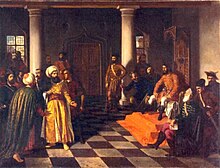
Vlad the Impaler and the Turkish Envoys. Painting by Theodor Aman.
Meanwhile, the Sultan received intelligence reports that revealed Vlad's domination of the Danube.[15] He sent the Bey of Nicopolis, Hamza Pasha, to make peace and, if necessary, eliminate Vlad III.[15] Vlad Țepeș planned to set an ambush. Hamza Pasha, the Bey of Nicopolis, brought with him 1000 cavalry and when passing through a narrow pass north of Giurgiu, Vlad launched a surprise attack. The Wallachians had the Turks surrounded and defeated. The Turks' plans were thwarted and almost all of them caught and impaled, with Hamza Pasha impaled on the highest stake to show his rank.[15] In the winter of 1462, Vlad crossed the Danube and devastated the entire Bulgarian land in the area between Serbia and the Black Sea. Disguising himself as a Turkish Sipahi, he infiltrated and destroyed Ottoman camps. In a letter to Corvinus dated 2 February, he wrote: 
A woodcut depicting Vlad Țepeș published in Nuremberg in 1488 on the title page of the pamphlet Die geschicht dracole waide.
In response to this, Sultan Mehmed II raised an army of around 60,000 troops and 30,000 irregulars,[17] and in spring of 1462 headed towards Wallachia. Commanding at best only 30,000 to 40,000 men (depending of the source),[citation needed] Vlad was unable to stop the Ottomans from crossing the Danube on June 4, 1462 and entering Wallachia. He constantly organized small attacks and ambushes on the Turks, such as The Night Attack when 15,000 Turks were killed.[2] This infuriated Mehmed II, who then crossed the Danube. With the exception of some Turkish references all the other chronicles at the time that mention the 1462 campaign state that the Sultan was defeated.[citation needed] Apparently, the Turks retreated in such a hurry that by July 11, 1462 the Sultan was already in Adrianopolis.[citation needed]. According to the Byzantine historian Chalcocondil[citation needed], Radu, brother of Vlad III and ingratiate of the Sultan, was left behind in Targoviste with the hope that he would be able to gather an anti-Vlad clique that would ultimately get rid of Vlad as Voivode of Wallachia and crown Radu as the new puppet ruler. Vlad the Impaler's attack was celebrated by the Saxon cities of Transylvania, the Italian states and the Pope. A Venetian envoy, upon hearing about the news at the court of Corvinus on 4 March, expressed great joy and said that the whole of Christianity should celebrate Vlad Țepeș's successful campaign. The Genoese from Caffa also thanked Vlad, for his campaign had saved them from an attack of some 300 ships that the sultan planned to send against them.[16] DefeatVlad's younger brother Radu cel Frumos and his Janissary battalions were given the task of leading the Ottoman Empire to victory at all expense by Sultan Mehmet II. After the Sipahis' incursions failed to subdue Vlad, the few remaining Sipahi were killed in a night raid by Vlad III in 1462. However, as the war raged on, Radu and his formidable Janissary battalions were well supplied with a steady flow of gunpowder and dinars; this allowed them to push deeper into the realm of Vlad III. Radu and his well-equipped forces finally besieged Poenari Castle, the famed lair of Vlad III. After his difficult victory Radu was given the title Bey of Wallachia by Sultan Mehmed II.Vlad III's defeat at Poenari was due in part to the fact that the Boyars, who had been alienated by Vlad's policy of undermining their authority, had joined Radu under the assurance that they would regain their privileges. They may have also believed that Ottoman protection was better than Hungarian. It was said as well that Radu (through his spies or traitors) found the place where some Boyars' families were hidden during the war (probably some forests around Snagov) and blackmailed them to come to his side. By 8 September, Vlad had won another three victories, but continuous war had left him without any money and he could no longer pay his mercenaries. Vlad traveled to Hungary to ask for help from his former ally, Matthias Corvinus. Instead of receiving help, he found himself arrested and thrown into the dungeon for high treason. Corvinus, not planning to get involved in a war after having spent the Papal money meant for it on personal expenses, forged a letter from Vlad III to the Ottomans where he supposedly proposed a peace with them, to give an explanation for the Pope and a reason to abandon the war and return to his capital. Captivity in HungaryVlad was imprisoned at Oratia, a fortress located at Podu Dâmboviței Bridge. A period of imprisonment in Visegrád near Buda followed, where the Wallachian prince was held for 10 years. Then he was imprisoned in Buda.The exact length of Vlad's period of captivity is open to some debate, though indications are that it was from 1462 until 1474. Diplomatic correspondence from Buda seems to indicate that the period of Vlad's effective confinement was relatively short. Radu's openly pro-Ottoman policy as voivode probably contributed to Vlad's rehabilitation. Moreover, Ștefan cel Mare, Voievod of Moldavia and relative of Vlad intervened on his behalf to be released from prison as the Ottoman pressure on the territories north of the Danube was increasing. Third reign and death
Vlad the Impaler as Pontius Pilate judging Jesus Christ. National Gallery, Ljubljana, 1463.[citation needed]
In the 19th century, Romanian historians cited a "tradition", apparently without any kind of support in documentary evidence, that Vlad was buried at Snagov, an island monastery located near Bucharest. To support this theory, the so-called Cantacuzino Chronicle was cited, which cites Vlad as the founder of this monastery. But as early as 1855, Alexandru Odobescu had established that this is impossible as the monastery had been in existence before 1438. Since excavations carried out by Dinu V Rosetti in June– October 1933, it has become clear that Snagov monastery was founded during the later 14th century, well before the time of Vlad III. The 1933 excavation also established that there was no tomb below the supposed "unmarked tombstone" of Vlad in the monastery church. Rosetti (1935) reported that “Under the tombstone attributed to Vlad there was no tomb. Only many bones and jaws of horses. " In the 1970s, speculative attribution of an anonymous tomb found elsewhere in the church to Vlad Tepes was published by Simion Saveanu, a journalist who wrote a series of articles on the occasion of the 500th anniversary of Vlad's death.[21] Most Romanian historians today favor the Comana monastery as the final resting place for Vlad Tepes.[20] LegacyReputation for crueltyEven during his lifetime, Vlad III Țepeș became famous as a tyrant taking sadistic pleasure in torturing and killing.[22] He is shown in cryptoportraits made during his lifetime in the role of cruel rulers or executioners. After Vlad's death, his cruel deeds were reported with macabre gusto in popular pamphlets in Germany, reprinted from the 1480s until the 1560s, and to a lesser extent in Tsarist Russia.
Vlad the Impaler as Aegeas, the Roman proconsul in Patras, crucifying Saint Andrew. Approximately 1470–1480, Belvedere Galleries, Vienna.[citation needed]
Impalement was Vlad's preferred method of torture and execution. Several woodcuts from German pamphlets of the late 15th and early 16th centuries show Vlad feasting in a forest of stakes and their grisly burdens outside Brașov, while a nearby executioner cuts apart other victims. It was reported that an invading Ottoman army turned back in fright when it encountered thousands of rotting corpses on the banks of the Danube.[13] It has also been said that in 1462 Mehmed II, the conqueror of Constantinople, a man noted for his own psychological warfare tactics, returned to Constantinople after being sickened by the sight of 20,000 impaled corpses outside Vlad's capital of Târgoviște.[25] Allegedly, Vlad's reputation for cruelty was actively promoted by Matthias Corvinus, who tarnished Vlad’s reputation and credibility for a political reason: as an explanation for why he had not helped Vlad fight the Ottomans in 1462, for which purpose he had received money from most Catholic states in Europe.[citation needed] Matthias employed the charges of Southeastern Transylvania, and produced fake letters of high treason, written on 7 November 1462.[citation needed] German sourcesThe German stories circulated first in manuscript form in the late 15th century and the first manuscript was probably written in 1462 before Vlad's arrest.[26] The text was later printed in Germany and had a major impact on the general public, becoming a best-seller of its time with numerous later editions adding to and altering the original text.In addition to the manuscripts and pamphlets the German version of the stories can be found in the poem of Michael Beheim. The poem called "Von ainem wutrich der hies Trakle waida von der Walachei" ("Story of a Madman Named Dracula of Wallachia") was written and performed at the court of Frederick III, Holy Roman Emperor during the winter of 1463.[27] To this day four manuscripts and 13 pamphlets have been found, as well as the poem by Michel Beheim. The surviving manuscripts date from the last quarter of the 15th century to the year 1500 and the found pamphlets date from 1488 to 1559–1568. Eight of the pamphlets are incunabula: they were printed before 1501. The German stories about Vlad the Impaler consist of 46 short episodes, although none of the manuscripts, pamphlets or the poem of Beheim contain all 46 stories. All of them begin with the story of the old governor, John Hunyadi, having Vlad's father killed, and how Vlad and his brother renounced their old religion and swore to protect and uphold the Christian faith. After this, the order and titles of the stories differ by manuscript and pamphlet editions.[24] Russian sourcesThe Russian or the Slavic version of the stories about Vlad the Impaler called "Skazanie o Drakule voevode" ("The Tale of Warlord Dracula") is thought to have been written sometime between 1481 and 1486. Copies were made from the 15th century to the 18th century, of which some twenty-two extant manuscripts survive in Russian archives.[28] The oldest one, from 1490, ends as follows: "First written in the year 6994 of the Byzantine calendar (1486), on 13 February; then transcribed by me, the sinner Efrosin, in the year 6998 (1490), on 28 January". The Tales of Prince Dracula is neither chronological nor consistent, but mostly a collection of anecdotes of literary and historical value concerning Vlad Țepeș.There are 19 anecdotes in The Tales of Prince Dracula which are longer and more constructed than the German stories. The Tales can be divided into two sections: The first 13 episodes are non-chronological events most likely closer to the original folkloric oral tradition about Vlad. The last six episodes are thought to have been written by a scholar who collected them, because they are chronological and seem to be more structured. The stories begin with a short introduction and the anecdote about the nailing of hats to ambassadors' heads. They end with Vlad's death and information about his family.[29] Of the 19 anecdotes there are ten that have similarities to the German stories.[30] Although there are similarities between the Russian and the German stories about Vlad, there is a clear distinction in the attitude towards him. The Russian stories tend to portray him in a more positive light: he is depicted as a great ruler, a brave soldier and a just sovereign. Stories of atrocities tend to seem to be justified as the actions of a strong ruler. Of the 19 anecdotes, only four seem to have exaggerated violence.[29] Some elements of the anecdotes were later added to Russian stories about Ivan the Terrible of Russia.[31] The nationality and identity of the original writer of the anecdotes Dracula is disputed. The two most plausible explanations are that the writer was either a Romanian priest or a monk from Transylvania, or a Romanian or Moldavian from the court of Stephen the Great in Moldavia. One theory claims the writer was a Russian diplomat named Fyodor Kuritsyn.[32] Ambras Castle portraitA contemporary portrait of Vlad III, rediscovered by Romanian historians in the late 19th century, had been featured in the gallery of horrors at Innsbruck's Ambras Castle. This original has been lost to history, but a larger copy, painted anonymously in the first half of the 16th century, now hangs in the same gallery.[1][2] This copy, unlike the cryptoportraits contemporary with Vlad III, seems to have given him a Habsburg lip.[citation needed]Popular cultureRomanian patriotism
Further information: Romanian national awakening
Romanian and Bulgarian documents from 1481 onwards portray Vlad as a
hero, a true leader, who used harsh yet fair methods to reclaim the
country from the corrupt and rich boyars. Moreover, all his military
efforts were directed against the Ottoman Empire which explicitly wanted
to conquer Wallachia. Excerpt from "The Slavonic Tales":
In "Letopisetul cantacuzinesc", a historic chronicle written by Stoica Ludescu from the Cantacuzino family around 1688, Vlad orders the boyars to build the fortress Poenari with their own hands. Later in the document, Ludescu refers to the (re)crowning of Vlad as a happy event:
Around 1785, Ioan Budai-Deleanu, a Romanian writer,and renowned historian, wrote a Romanian epic heroic poem, "Țiganiada", in which prince Vlad Țepeș stars as a fierce warrior fighting the Ottomans. Later, in 1881, Mihai Eminescu, one of the greatest Romanian poets, in "Letter 3", popularizes Vlad's image in modern Romanian patriotism, having him stand as a figure to contrast with presumed social decay under the Phanariotes and the political scene of the 19th century. The poem even suggests that Vlad's violent methods be applied as a cure. In the final lyrics, the poet makes a call to Vlad Tepes (i. e. Dracula) to come, to sort the contemporaries into two teams: fool and rotten and then set fire to the prison and to the fools' home.[37]
Bram StokerThe connection of the name "Dracula" with vampirism was made by Bram Stoker, who probably found the name of his Count Dracula character in William Wilkinson's book, An Account of the Principalities of Wallachia and Moldavia: with various Political Observations Relating to Them.[41] It is known that Stoker made notes about this book.[42] It is also suggested that Stoker may have been made aware of the reputation of Vlad through an acquaintance of his, Hungarian professor Ármin Vámbéry from Budapest. The fact that character Dr. Abraham Van Helsing states in the 1897 novel that the source of his knowledge about Count Dracula is his friend Arminius appears to support this hypothesis, although there is no specific evidence that Stoker and Vambéry ever discussed Wallachian history.Referring to a letter from his friend Arminius, van Helsing comments: This encourages the reader to identify the Vampire Count with the Voivode Dracula first mentioned by him, the one betrayed by his own brother: Vlad III Dracula betrayed by his brother Radu the Handsome. But as noted by the Dutch author Hans Corneel de Roos, in Chapter 25, Van Helsing and Mina drop this rudimentary connection and instead describe the Count's personal past as that of "that other of his race" who lived "in a later age". This way, Stoker avoided the possibility that his main character could be definitely linked to any specific historical person.[43] Documentaries and filmsUnlike the many films based on the fictitious Dracula character, there have been few movies about the real man who inspired Bram Stoker's creation.The 1975 documentary In Search of Dracula explores the history and legends of Vlad the Impaler and the connection between the historical character and the vampire of Stoker's novel. Both the historical and literary Dracula are portrayed in the film by Christopher Lee, best known for his numerous portrayals of the fictional Dracula in films ranging from the 1950s to the 1970s.[44] In 1979, a more historically accurate Romanian film called Vlad Țepeș (sometimes known, in other countries, as The True Story of Vlad the Impaler) was released, based on his six-year reign and brief return to power in late 1476. The character is portrayed in a mostly positive perspective, though the film also mentions the excesses of his regime and his practice of impalement. The lead character is played by Ștefan Sileanu.[45] Vlad was depicted in his youth in the 1989 Romanian film Mircea, which focused on the reign of his grandfather, Mircea I of Wallachia (AD 1386-1418). Vlad was also depicted in the 2000 film, "Dark Prince: The True Story of Dracula". MusicVlad is portrayed in the 2010 release, Vlad the Impaler (song), by Kasabian. The track was complemented by a music video featuring Noel Fielding as Vlad.Non-fiction BiographiesA range of biographies are available, but most mix the vampire-myth with historic facts. An exception is 'In the Shadow of Empires' (2012), an easy to read biography that stays with the historic facts and ignores the vampire. |




